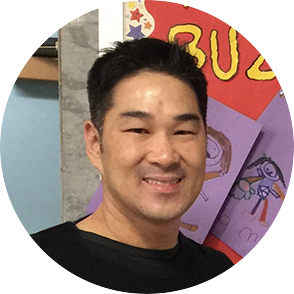What Makes an Awesome Picture Book?

You want to create an awesome picture book, the kind that kids reach for over and over again. Right? So, let's talk about the most important elements of a picture book. I’m going to share the two sins of storytelling—two problems that you need to avoid—and three solutions that will help you avoid them and tell a great story.
Sin #1: Boring!
A lot of stories are just boring. This happens when we try to teach lessons or tell stories with adult problems. Those things just aren’t interesting to the kids who are your audience. You don’t want to tell boring stories.
Sin #2: Doesn’t Make the Reader Care
You have to make the reader care. If the reader doesn’t care, that’s usually caused by one of the following problems:
- Your idea is too vague or abstract. Build your world more. Flesh out the details and create something readers can empathize with, relate to, and visualize. Be specific about your character and your problem.
- You’re leading with what you want to say, instead of building from the character’s point-of-view. Be wary of making your story so plot-driven that readers don’t care about the character. Readers want to experience the story as the character, so characters and their motivations need to feel real.
- The story doesn’t feel honest or true to real life. Does your story have stakes? Consequences? Is it connecting with a child’s world in a way that feels authentic?
- Lessons often stink! Kids can smell a lesson from a mile away. They don’t pick up a picture book because they want another lecture on what they should be doing better. Often, they’re picking up a story to escape from that.
- You have too many problems in your story. Simple stories are more powerful. Get clear about what the problem in your story really is.
Now that you know which problems to avoid, let’s talk about the three things that every great picture book has.
Solution #1: Kid-Relatable Emotion
Identify the emotion that you want your readers to feel. Make sure you’re getting into a child’s emotional experience. Now, how is that emotion tied to the main problem in the story?
The number one problem that I see over and over again is stories that escalate based on a sequence of actions, when they really need to escalate based on emotion. If readers aren’t emotionally involved in the story, they won’t care about what happens. What is at stake if your character fails?
In the following video, I share how to escalate the emotion of a story through story loops.
Solution #2: Kid-Relatable Problem
An awesome picture book has one main problem, and kids can relate to that problem. That means it isn’t an adult sort of problem. A lot of times when we start writing a picture book, we come at it from an adult point-of-view.
If you’re not sure how to find a kid-relatable problem, try mining your childhood fantasies. What did you daydream about when you were a kid? Ask yourself “What if . . . ?” to figure out your story. Imagine that you’re a kid. What would you want to see play out?
I give examples of three mentor texts you can study in the following video.
Solution # 3: It-Factor
It-factor is what makes a reader want to pick up a book. Whether it’s a little girl who wants to be fancy or a bunch of taco munching dragons, it’s a concept that promises readers they’ll love the story.
I share some of my favorite examples of it-factor in the following video.
If you aren’t sure that your story has it-factor, try doodling your favorite parts of the story. What are the magical moments? How can you make your story something that an illustrator would jump at the chance to illustrate?
Push the boundaries of your story. Could changing your character to something else give you a better story concept? Your character can be anything. Let yourself imagine all of the possibilities.
It’s your turn to come up with an awesome picture book.
Blog Contributors

Myrna Foster writes and edits content for Storyteller Academy and the WriteRiders Newsletter for SCBWI Nevada. She has spent a lot of time teaching and coaching children, including five years as a preschool teacher. She's also worked as a journalist, and Highlights High Five has published six of her poems.

Arree Chung is an author/illustrator and the founder of Storyteller Academy. Arree’s Ninja! series has received starred reviews from Kirkus and School Library Journal. Kirkus also gave a starred review to Mixed, which recently won the FCGB award.
Today Arree lives a creative life, making stories for children. Arree spends most of his time making picture books, writing middle grade novels, and sharing his love for art, design, and storytelling with kids and dreamers everywhere.
